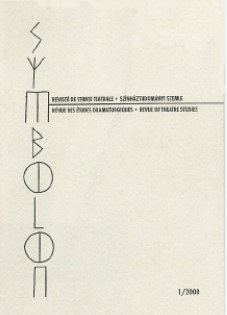Csúf hősnők reprezentációi drámai szövegekben. A. P. Csehov „Ványa bácsi” és Bródy Sándor „A medikus” című drámáinak hősnői
Representations of Ugly Heroines in Dramatic Texts. Heroines of A.P. Chekhov’s “Uncle Vanya” and Sándor Bródy’s “The Medic”
Author(s): Ágnes VáradiSubject(s): Theatre, Dance, Performing Arts, Gender Studies, Russian Literature, Film / Cinema / Cinematography, Theory of Literature
Published by: UArtPress - Editura Universității de Arte din Tîrgu Mureş - A Marosvásárhelyi Művészeti Egyetem Kiadója
Keywords: heroines; stereotypes; looks; femininity; being different;
Summary/Abstract: Inferences about female characters’ body can be made from several different aspects in the drama framework including information exchange among characters and self-representational confessions; moreover, authors’ paratexts also offer a basis for the external endowments of a female figure. The study focuses on two plays in which two young girls become major characters who break through stereotypical patterns with their appearance and differ from social norms to some extent. The heroines of A.P. Chekhov’s Uncle Vanya and Sándor Bródy’s The Medic (Sonia and Riza) will have different fates. Whilst Riza finds her happiness and fulfils herself as a wife and this is not given to Sonia. She has to give up experiencing her femininity. What they have in common is the shortcomings of their physical appearance. Riza’s physical disability will become a commercial asset, as a matter of fact she becomes a commodity. The play's central metaphor is Sonia’s face in the mirror: the feeling of abandonment, humiliation appears as a representation of no way out.
Journal: SYMBOLON
- Issue Year: XXII/2021
- Issue No: Sp. Issue
- Page Range: 185-196
- Page Count: 12
- Language: Hungarian

